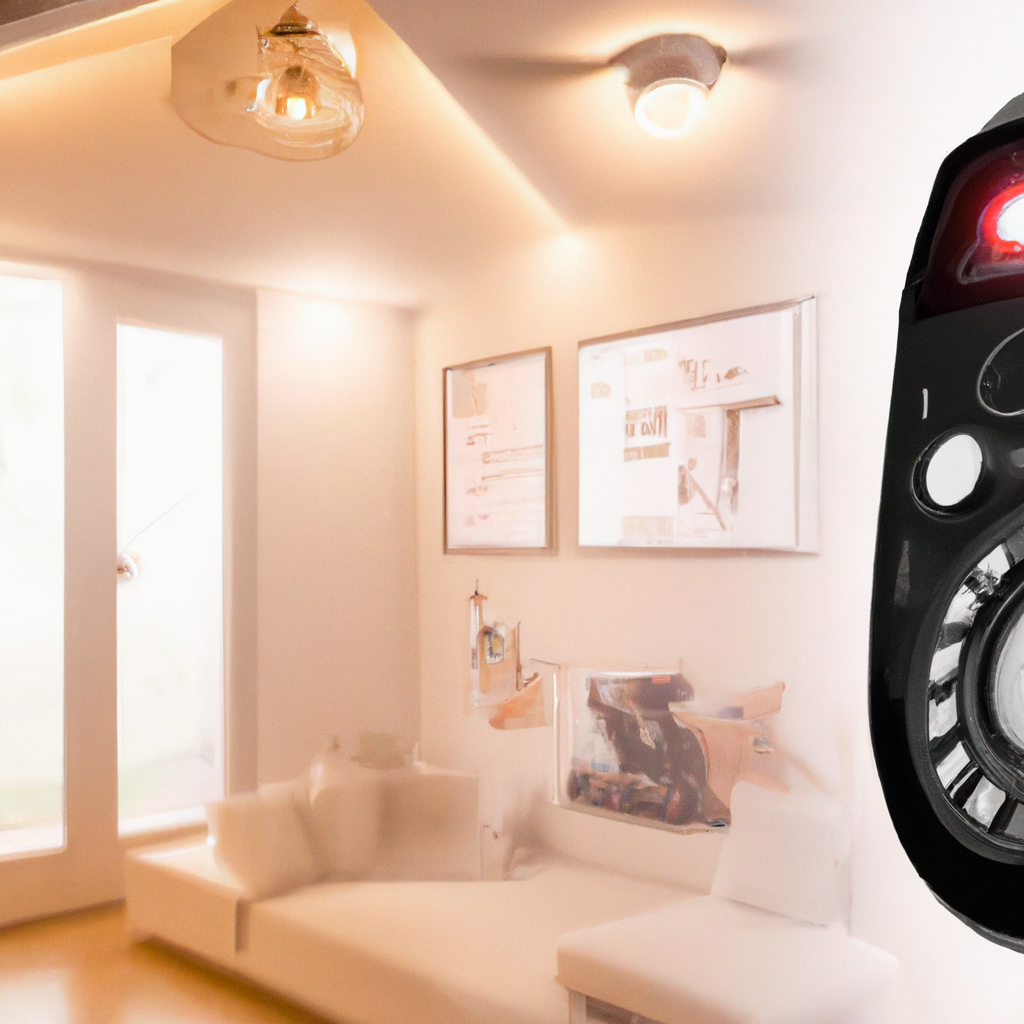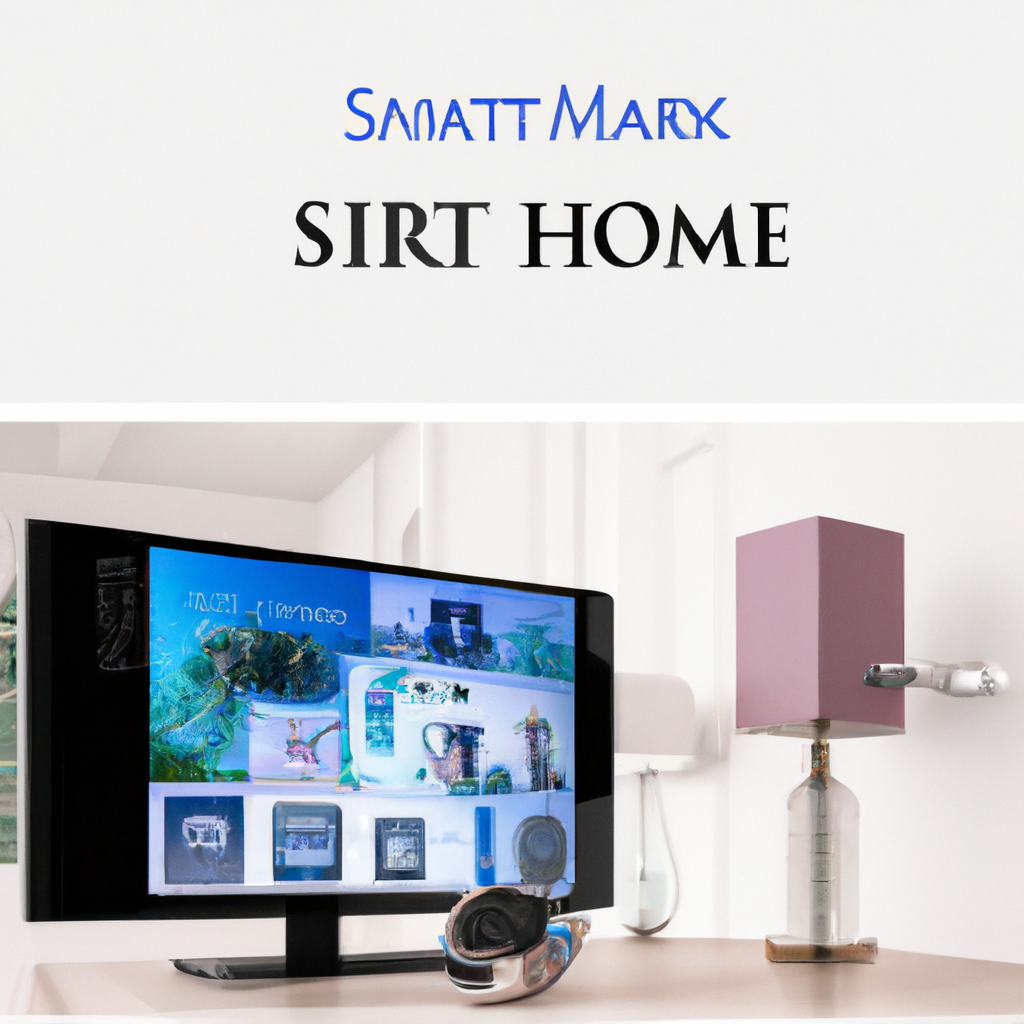Setting up a comprehensive smart home security system is becoming increasingly important in today’s digital age. With the rapid advancement of technology, it has become easier than ever for hackers and intruders to gain access to our personal information and invade our privacy. In order to protect yourself and your loved ones, it is crucial to have the right components in place to create a secure and reliable smart home security setup. From smart locks and cameras to motion sensors and alarm systems, this article will highlight the essential components that can help you safeguard your home and bring peace of mind.

Camera System
When it comes to keeping your home secure, one of the most essential components is a reliable camera system. With the advancements in technology, you now have a wide range of options to choose from, depending on your specific needs and preferences.
Indoor Cameras
Indoor cameras are designed to monitor the inside of your home. They can be placed strategically in various rooms to provide you with a comprehensive view of what is happening inside your property. These cameras are especially useful for keeping an eye on children, pets, or even monitoring for any potential intruders. With indoor cameras, you can have peace of mind knowing that you can check in on your home at any time, from anywhere, using your smartphone or computer.
Outdoor Cameras
Outdoor cameras are an integral part of any smart home security setup. These cameras are specifically designed to withstand the elements and can be placed at various locations around the exterior of your property. They offer a valuable layer of protection by capturing any suspicious activity outside your house, such as trespassers or package thieves. With outdoor cameras, you can easily detect any potential threats and take appropriate action to keep your home safe.
Doorbell Cameras
Doorbell cameras have gained immense popularity in recent years, and for good reason. These cameras not only serve as a convenient way to see who is at your door but also provide an added layer of security. With a doorbell camera, you can view live footage of anyone approaching your front door, even when you’re not at home. These cameras often have motion detection capabilities and can send notifications to your phone so that you never miss a visitor, whether it’s a friendly neighbor or a suspicious stranger.
Door and Window Sensors
Door and window sensors are essential components of a comprehensive smart home security setup. These sensors are discreetly placed on doors and windows throughout your home and serve as the first line of defense against potential intruders.
Magnetic Sensors
Magnetic sensors are the most common type of door and window sensors. They consist of two parts: one attached to the door or window frame and the other to the door or window itself. When the door or window is closed, the two parts are in close proximity, indicating that they are secure. If the door or window is opened, the magnetic connection is broken, triggering an alert to the security system.
Glass Break Sensors
Glass break sensors are specifically designed to detect the sound and vibration patterns associated with the breaking of glass. These sensors are ideal for protecting windows, especially those that may not have magnetic sensors installed. They are highly sensitive and can quickly trigger an alarm if an intruder attempts to break a window to gain entry into your home.
Motion Sensors
Motion sensors are another crucial component of a comprehensive smart home security system. These sensors can detect motion within a specific area and are especially useful for larger rooms or areas where installing door and window sensors may not be practical. Motion sensors can alert you to any movement in your home, whether it’s an unexpected visitor or an intruder. They are adjustable to fit your needs, allowing you to set the sensitivity level and the areas you want to monitor.
Smart Locks
Smart locks are an excellent addition to your smart home security setup as they offer convenience, flexibility, and enhanced security. With smart locks, you can eliminate the need for traditional keys and gain more control over who enters your home.
Keyless Entry
Gone are the days of fumbling for your keys or worrying about lost or stolen keys. With keyless entry, you can unlock your door using a variety of methods, such as a PIN code, fingerprint, or even your smartphone. This eliminates the need for physical keys and provides a secure and convenient way to enter your home.
Remote Access
One of the significant advantages of smart locks is the ability to remotely access and control them. Whether you’re at work or on vacation, you can easily lock or unlock your doors using a smartphone app. This feature gives you peace of mind, knowing that you can monitor and control your home’s access from anywhere.
Integration with Home Security System
Smart locks can also be integrated with your home security system, creating a seamless and comprehensive security solution. When your smart lock is connected to your security system, it can trigger an alarm or send notifications if there is any suspicious activity or unauthorized entry attempts. This integration ensures that your home remains protected at all times.
Smart Alarms and Sirens
Smart alarms and sirens are crucial components of a comprehensive smart home security setup. These devices are designed to deter intruders and alert you of any potential threats.
Loud Sirens
Loud sirens are a powerful deterrent against intruders. When triggered, they emit a loud and attention-grabbing sound that can startle intruders and make them think twice about attempting to enter your home. The volume and duration of the siren can usually be customized based on your preferences.
Alarm Systems
Smart alarm systems combine various sensors and detectors, such as motion sensors, door/window sensors, and glass break sensors, to provide comprehensive coverage for your home. These systems are designed to detect any unauthorized entry or suspicious activity and trigger an alarm. Many smart alarm systems also allow you to customize settings, such as the sensitivity of the sensors, to reduce the chance of false alarms.
Mobile Notifications
Mobile notifications are a vital feature of smart alarms and sirens. When an alarm is triggered, you can receive instant alerts on your smartphone, allowing you to take immediate action, whether it’s contacting authorities or checking live camera footage. These notifications ensure that you are always informed and aware of any potential security breaches.

Video Doorbells
Video doorbells have revolutionized the way we interact with our front doors. These devices offer a range of features that enhance both convenience and security.
Two-Way Communication
One of the key features of video doorbells is two-way communication. With built-in speakers and microphones, you can have a conversation with anyone at your front door, whether you’re at home or away. This feature is particularly useful for receiving package deliveries, communicating with visitors, or even deterring suspicious individuals.
Motion Detection
Video doorbells equipped with motion detection can provide an added layer of security. When motion is detected in the camera’s field of view, you will receive a notification on your smartphone. This allows you to see who is at your door, even before they ring the doorbell. You can then decide to engage in two-way communication or take appropriate action based on what you see.
Cloud Storage
Cloud storage is a valuable feature offered by many video doorbell manufacturers. It allows you to store recorded footage in the cloud, ensuring that you always have access to important recordings, even if the doorbell itself is tampered with or stolen. Cloud storage also provides the convenience of being able to review past events and share footage with law enforcement if necessary.
Smart Lighting
Smart lighting is not only a convenient addition to your home but also plays a significant role in enhancing your home security.
Security Lighting
Security lighting is an essential aspect of a comprehensive smart home security setup. With smart security lighting, you can automatically illuminate the exterior of your home during certain hours or when motion is detected. This serves as a deterrent to potential intruders by making your property less attractive as a target and providing clear visibility in the surrounding areas.
Motion-Activated Lights
Motion-activated lights are a convenient and energy-efficient feature. They automatically turn on when motion is detected and turn off after a predefined period of inactivity. This not only saves energy but also alerts you to any movement around your property, whether it’s a family member arriving home late or an unwanted visitor.
Remote Control
Smart lighting allows you to control and customize your home’s lighting from anywhere using your smartphone or voice commands. This feature can be useful for creating the illusion of an occupied home while you’re away, deterring potential intruders. You can schedule lights to turn on and off at specific times, making it appear as if someone is home, even when you’re not.

Smart Thermostats
While smart thermostats are primarily known for their energy-saving capabilities, they also offer several security-related features that contribute to a comprehensive smart home security setup.
Integration with Security System
Smart thermostats can be integrated with your home security system to provide enhanced security and convenience. By connecting your thermostat to your security system, you can automate temperature adjustments based on your home’s occupancy status. This integration ensures that your home remains comfortable when you’re there and helps save energy when you’re away.
Remote Monitoring
With a smart thermostat, you can monitor and control your home’s temperature remotely. Whether you want to adjust the temperature before you arrive home or ensure that your home remains at a comfortable temperature while you’re away, remote monitoring gives you full control over your thermostat from anywhere using your smartphone.
Usage Patterns
Smart thermostats are incredibly intuitive and can learn your heating and cooling preferences over time. This feature allows them to automatically adjust temperature settings based on your usage patterns, helping you save energy and ensure optimum comfort without manual intervention. You can also receive insights into your energy usage, allowing you to make informed decisions about your home’s energy consumption.
Secure Wi-Fi Network
In today’s connected world, securing your Wi-Fi network is essential to protect your smart home devices and personal information from unauthorized access.
Strong Passwords
One of the first steps in securing your Wi-Fi network is to set a strong password. A strong password should be long and include a combination of uppercase and lowercase letters, as well as numbers and special characters. It is also important to change your Wi-Fi password regularly and avoid using easily guessable information, such as your name or address.
Encryption
Enabling encryption on your Wi-Fi network is crucial for ensuring that your data is transmitted securely. The most common encryption standards used today are WPA2 (Wi-Fi Protected Access 2) and WPA3. These encryption protocols provide a secure connection between your devices and your Wi-Fi network, making it difficult for unauthorized users to intercept your data.
Guest Network
Setting up a guest network is an effective way to protect your main Wi-Fi network from potential security risks. A guest network allows visitors to access the internet without having access to your private network and connected devices. This helps prevent unauthorized access to your smart home devices and maintains the security of your personal information.

Smart Garage Door Opener
The garage is often an overlooked entry point to your home, making it essential to include a smart garage door opener in your smart home security setup.
Remote Control
With a smart garage door opener, you can open and close your garage door remotely using a smartphone app. This eliminates the need for traditional garage door openers or keys and allows you to monitor and control garage access from anywhere. You can also receive notifications when the garage door is opened or closed, providing an additional layer of security.
Activity Logs
Smart garage door openers often come with activity logs that allow you to track who has accessed your garage and when. This feature is particularly useful for monitoring any suspicious activity or unauthorized entry attempts. The activity logs can be accessed through a smartphone app or a web interface, providing a convenient way to keep tabs on your garage’s security.
Integration with Security System
Integrating your smart garage door opener with your home security system can further enhance your home’s security. By connecting the garage door opener to your security system, you can set up rules and automations that ensure the garage door is securely closed when you leave home or arm your security system. This integration adds an extra layer of protection and simplifies the management of your smart home security.
Security System Integration
Having a centralized and integrated control over all your smart home security devices enhances the effectiveness and convenience of your setup.
Centralized Control
With security system integration, you can control and monitor all your smart home security devices from a single platform. Whether it’s arming and disarming your security system, checking live camera feeds, or receiving notifications, centralized control simplifies the management of your smart home security. You can access this platform from anywhere using a smartphone app or a web interface, ensuring that you always have control over your home’s security.
Synchronized Notifications
By integrating your security system with other smart home devices, you can sync notifications to receive alerts for specific events across different devices. For example, when your security system detects a break-in, it can simultaneously trigger the alarm, activate the cameras, and send a notification to your smartphone. This synchronized approach ensures that you are promptly informed of any security breaches, making it easier to take appropriate action.
Expandability
One of the significant advantages of a comprehensive smart home security setup is the ability to expand and add new devices as your needs evolve. By choosing a system that supports integration and expansion, you can easily incorporate new security devices into your setup, such as additional cameras, sensors, or even smart locks. This scalability ensures that your home security system can grow with you and adapt to meet your changing requirements.
In conclusion, a comprehensive smart home security setup consists of a combination of essential components that work together seamlessly to provide maximum protection for your home and loved ones. From camera systems and door/window sensors to smart locks and security alarms, each component plays a crucial role in ensuring the safety and security of your home. By integrating these devices and utilizing advanced features such as remote access and centralized control, you can enjoy peace of mind knowing that your home is well-protected at all times. So, invest in a comprehensive smart home security system today and take control of your home’s security like never before!











